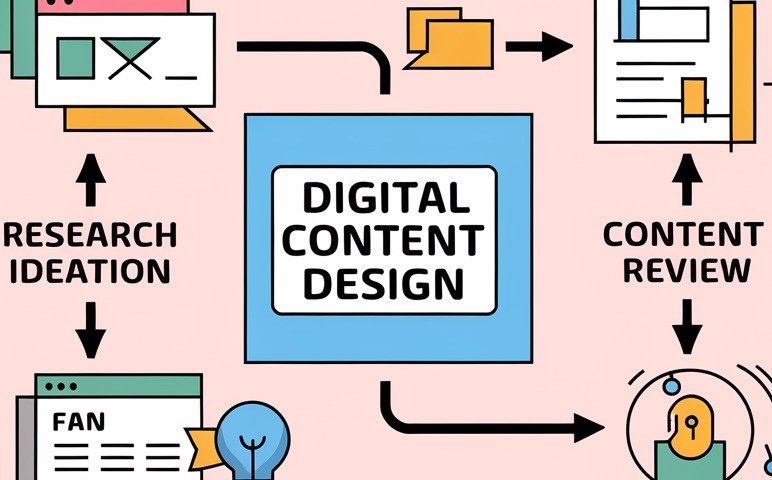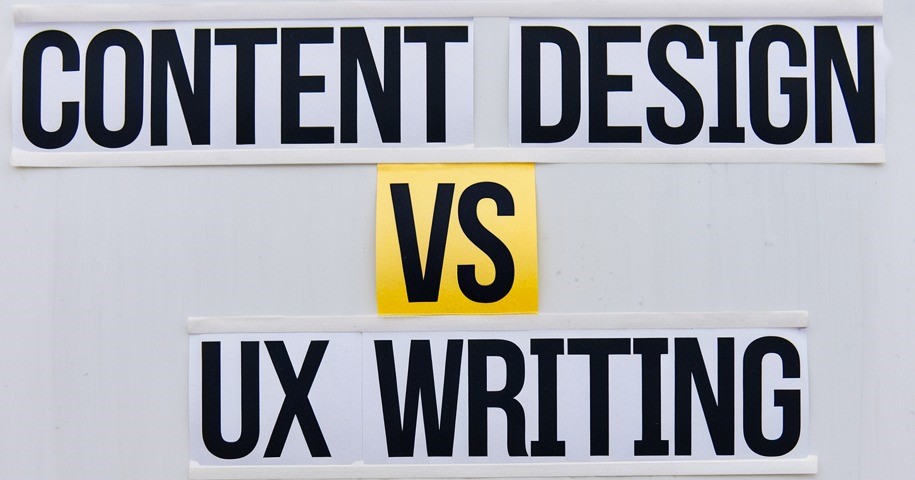Businesses and product designers must provide a smooth user experience when consumer expectations are high in today's digital world. UX authoring and content design impact people's engagement with digital products and services. These positions typically overlap, but each has a specific emphasis that improves a product. Businesses that want to create clear, engaging, and accessible user experiences must understand content design and UX authoring. This post will explain the responsibilities, goals, and differences between content design and UX writing and why both are essential to product's design and prototyping.
Content design focuses on consumers' demands at each user experience stage. Content design is strategic, unlike solo content generation. A thorough understanding of user purpose, behavior, and preferences, as well as data and research, drives what, where, and how interface material appears. Content designers must collaborate with UX, design, and product teams to develop a seamless user experience that helps users achieve their goals. Content design is the art and science of presenting information naturally and intuitively.

A strategy and structure that makes information easy to explore and consume is key to content design. It requires content hierarchies, user flows, and prioritization to help people discover what they need fast. Content designers plan the user journey through a product and place particular information to assist them in understanding and using the interface. Effective content layout helps consumers explore the product naturally and doesn't overwhelm them with too much information. Content design connects user demands to product functioning.
Content designers are responsible for content creation, execution, and optimization. They collaborate with design, development, and user research teams to understand audience objectives and issues and inform content. Content designers create user journey frameworks that link information with user demands and company goals. Content designers may construct a structure for onboarding new users with instructions, recommendations, and useful resources that lead them easily. Content designers must be creative, strategic, and adaptable to meet changing consumer expectations.
Though similar to content design, UX writing is narrower. Writing “microcopy”—words and phrases that assist users through a product's interface—is its focus. User experience (UX) writing is brief, action-oriented, and meant to assist users in rapidly navigating, understanding, and interacting with a product. UX writers reduce ambiguity and make interactions as clear as possible to let users know what to do next. By simplifying difficult procedures, UX writing may improve the user experience.

A fundamental purpose of UX authoring is to simplify and streamline user interactions. Effective UX writing reduces cognitive strain, letting users decide without second-guessing. Well-written button labels like “Add to Cart” or “Continue” convey an immediate action without uncertainty. User experience writers simplify complicated instructions into simple, practical actions to avoid misunderstandings. UX writing improves usability and reduces user effort by anticipating demands and resolving pain areas. Clarity and simplicity make UX writing a great tool for enhancing user experience.
UX writers collaborate with product designers, developers, and researchers to ensure language aligns with visual and functional features. This cooperation is vital because words and images create a unified experience. For instance, platforms like SpeedyPaper service recognize the importance of collaborative processes in writing, helping to balance clear language with design constraints. UX writers may adjust material based on designer feedback to fit space restrictions like button sizes without losing clarity. By working closely with designers, they ensure microcopy aligns with visual signals, enhancing interface intuitiveness. This method enables UX writers to create natural, user-friendly material that improves usability and engagement.
Content design and UX authoring aim to improve user experience, but their scope, focus, and execution differ. Content design organizes and structures information throughout a product's long-form content, user flows, and information architecture, going beyond individual encounters. UX writing refines text for buttons, notifications, and prompts that enable rapid action. Teams must understand these distinctions to employ each job and develop a user-friendly product.

Content design includes content planning, user flows, and long-form material that guides users through a product. It demands a big-picture view of information presentation and consumption. However, UX writing concentrates on microcopy on buttons, error messages, and prompts. It seeks to guide consumers without overloading them with information. UX writers focus on the minutiae that make each phase of the trip seamless, whereas content designers consider journey structure.
Content designers and UX writers employ numerous methods to reach their goals. Content designers may use user research, persona building, and data analysis to create frameworks. CMS and user flow mapping tools help them organize and display data. In contrast, UX writers use usability and clarity testing to improve microscopy. These tests let UX writers see how users react to the language in real time, improving clarity and reducing friction. Content design emphasizes structure and strategy, whereas UX writing emphasizes usability and clarity.
Content design and UX authoring are essential for creating a functional and pleasurable user experience in today's competitive digital world. Content design organizes and simplifies information, whereas UX writing refines user interactions. Content design and UX authoring provide a natural, friendly, easy-to-navigate experience that boosts user happiness and retention.
 Mockplus RP
Mockplus RP
A free prototyping tool to create wireframes or interactive prototypes in minutes.
 Mockplus DT
Mockplus DT
A free UI design tool to design, animate, collaborate and handoff right in the browser.
